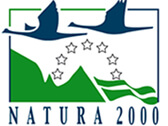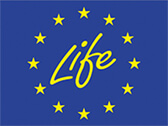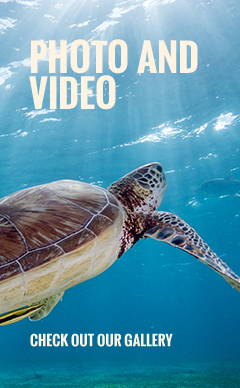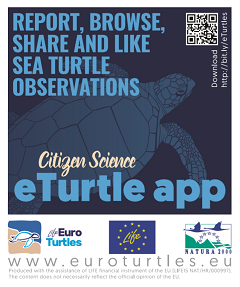The project focuses on areas that are pivotal for the conservation of the two sea turtle species occurring in the EU territory (Caretta caretta and Chelonia mydas).
In the EU, Caretta caretta has major nesting sites in Greece and Cyprus, and limited nesting in Italy. Most turtles from these sites remain in the eastern Mediterranean, with key foraging grounds located in EU waters, like the Adriatic (Italy, Slovenia, Croatia), Ionian (Italy, Greece, Malta), and the Levantine basin (Cyprus, Greece). In the EU, Chelonia mydas breeds in Cyprus only, and its foraging grounds in EU waters are in Cyprus and Greece. Those foraging grounds are also frequented by turtles from other Mediterranean nesting sites. The nesting sites and foraging grounds located in the EU territory are extremely important for Mediterranean sea turtles as a whole. Anthropogenic threats are particularly intensive in the EU territory, with high coastal development and fishing effort, which combined affect all sea turtle stages, from the critical reproductive phase to all age classes at sea.
All this makes conservation actions in key EU areas crucial for EU and Mediterranean sea turtle populations. The project is focused on those areas where conservation measures are deemed as important and urgent, and can make a difference for the sea turtle status at EU, national and local levels. The project includes all the 6 EU countries mentioned above (Croatia, Cyprus, Greece, Italy, Malta, Slovenia), and the relevance of the specific areas prioritized is described in the following national sections.

Croatia
Croatian waters represent one of the key neritic feeding habitats for EU populations and a wintering habitat for the species. Wide and shallow continental shelf, rich benthic communities and favourable temperature regimes make the northern Adriatic Sea a feeding habitat of the Mediterranean importance. Satellite tracking and aerial survey emphasized waters off the western coast of Istria Peninsula and west side of Cres-Lošinj – Dugi otok Archipelago as a high-use feeding areas. High bycatch of loggerheads in bottom trawls during the winter also indicates the role of Adriatic as a wintering habitat. Trawl bycatch rates increase for about 10 folds from the western (Italian) part towards the eastern (Croatian) coast. These habitats are in waters with sea temperature >11-12°C and are located off the west coast of Cres, Lošinj and Dugi otok islands. Such distribution of wintering habitats is result of longitudinal and latitudinal gradients of sea temperature during winter and appropriate bottom substrate for wintering turtles.

Cyprus
The project focuses on the Polis-Gialia Natura 2000 site (CY4000001), which is a very important nesting habitat for Caretta caretta. Further, the marine area of the Natura 2000 site provides important feeding grounds for Chelonia mydas and to a lesser degree to C. caretta. A sizable juvenile C. mydas population feeds on the extensive seagrass meadows of the bay (Posidonia oceanica and Cymodocea nodosa), in addition to adults of both species. This site was selected based on the presence of both species of sea turtles in the marine and terrestrial area and the fact that it contains the most important nesting site for C. caretta on the island. Fishing pressure is high in the marine area, as well as high traffic of tourist boats and jet skis during the summer months. The area is also a popular holiday location facing intensive touristic development in the past years. Some actions will also be carried out at Lara / Toxeftra, within the Chersonisos Akama Natura 2000 site (CY4000010), an important nesting site that is included in the catalogue of Specially Protected Areas of Mediterranean Importance (SPAMI). This is the main nesting area for Chelonia mydas with well over 80% of the nests located in this site. In Cyprus about 80% of all nests of Caretta caretta are located in the two SCIs (Natura 2000 sites). All nesting beaches are monitored.

Greece
Nesting areas
The five areas selected for project actions (northern Kyparissia Bay, southern Kyparissia Bay, Evrotas beach (in Lakonikos Bay), Ionian coast of Preveza, and Strophylia-Kotyhi) are crucial to the long-term conservation status of loggerhead turtles in the Mediterranean. The 9.5 km beach of southern Kyparissia Bay has been the site of a previous LIFE project, one of its objectives being the recovery of the nesting population. Indeed, after 15 years of intense nest-protection, the nesting population was doubled: from 524 nests/yr (average in the period 1997-2001) to 1053 nests/yr (average in the period 2010-2014). It is therefore necessary to continue the nest-protection work in this area which now needs increased resources. The 35-km beach of northern Kyparissia Bay was sample-surveyed recently and estimated to host about 400 nests/yr, which is a remarkable nesting population that should be protected. The 15-km beach of Evrotas hosts about 100 nests/year which are subject to heavy predation. Previous surveys at the 21-km beach Strophylia-Kotyhi have revealed about 50 nests/yr. All above four nesting areas are found within Natura 2000 sites. The 13-km beach along the Ionian coast of Preveza may hosts a few nests but it is one of the northermost nesting areas in the Mediterranean and in view of the climate change it is advisable to protect the nesting population that utilizes this beach.
Foraging and inter-nesting areas
The marine area of Kyparissia Bay, which is also a Natura 2000 site, concentrates many turtles which are subject to considerable pressure by fishing activities. Same happens in the marine area of Rethymno Bay (Crete), also a Natura 2000 site. In the lagoon of Mesologhi marine turtles of both species are frequently trapped in the aquaculture facilities (divaria). Finally, the marine area in Lakonikos Bay, in front of Evrotas beach, is a well known developmental habitat of young loggerhead (Caretta caretta) and green (Chelonia mydas) turtles, due to its sea grass meadows.

Italy
Foraging grounds
Italy borders some of the most important foraging grounds for Caretta caretta in the Mediterranean, like the Adriatic and the Ionian Seas. The Italian coast of the Adriatic is frequented by high numbers of turtles, as shown by stranding and bycatch levels, and represents a migratory corridor. Recently, the wide shallow area of the Gulf of Manfredonia has been recognized as an important foraging area for loggerheads of a wide size range, including adults, that are incidentally captured by bottom trawlers. The high level of anthropogenic threats in this area as well as in the wider Adriatic deserves more attention and conservation measures. For this reason the Gulf of Manfredonia has been selected as a project area. Another project area is the Pelagian Archipelago, which is located at the northern edge of the north African continental shelf, between neritic area in the south and oceanic area in the north that are both frequented by high numbers of loggerheads. In both areas the bycatch level is high, with longliners catching prevalently small juveniles in the oceanic zone and trawlers catching prevalently large juveniles and adults in the neritic zone. This area is an obligate corridor between the western and eastern basins but also a long-term foraging area for juveniles and adults, as shown by satellite tracking in particular for the neritic zone. This is a shared foraging area for individuals from all around the Mediterranean – Greece, Libya, Turkey, Cyprus – and from the Atlantic. A local Natura 2000 site aims to protect many species, including Caretta caretta, for which, however, the focus has been the nesting sites located in Lampedusa and Linosa islands, while the Archipelago is orders of magnitude more important for the species as a major foraging ground and the areas most frequented by turtles are outside the Natura2000 site.
Nesting areas
Italy has low nesting levels in comparison to other countries. Currently, Calabria region is known to host most nests in Italy, thanks to a specific project that assessed the nesting level starting from preliminary clues. Similar clues exist for the Sicily region too, which is suspected to host more turtle nesting than assessed with the currently available means. Basilicata may host additional nests too. For this reason, specific locations in Sicily and Basilicata, have been selected for conservation actions on sea turtle nesting. Additional areas may be identified during the project.

Slovenia
Slovenian territorial waters, like the entire Northern Adriatic Sea, represent an important development and foraging ground for large numbers of loggerhead turtles (Caretta caretta), particularly juveniles. They are present in these waters from April to November. In winter, the low water temperatures force them to retreat to warmer southern waters of the Northern Adriatic, after which they return to their foraging grounds. This is evident from different lines of evidence, including fishery catches, boat-based survey and satellite telemetry. These turtles predominantly belong to the Greek nesting populations, but are subject to considerable mortality resulting from bycatch in fishing gear. Effective conservation of this population therefore requires management of threats in these waters.



